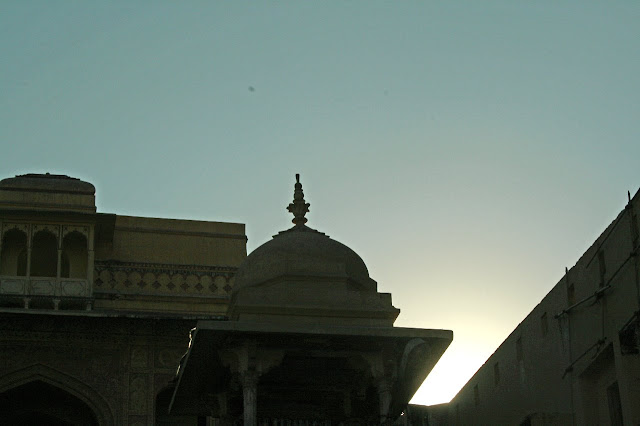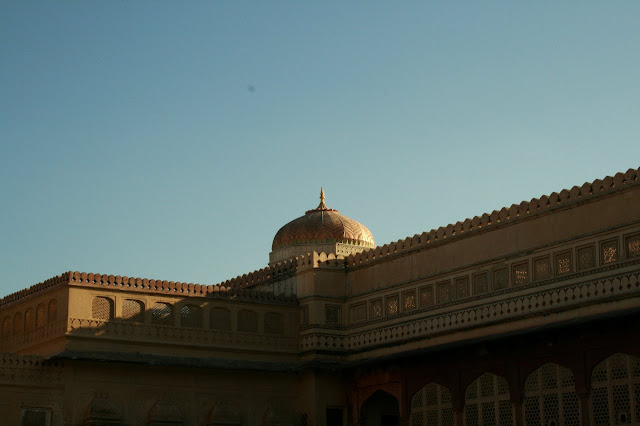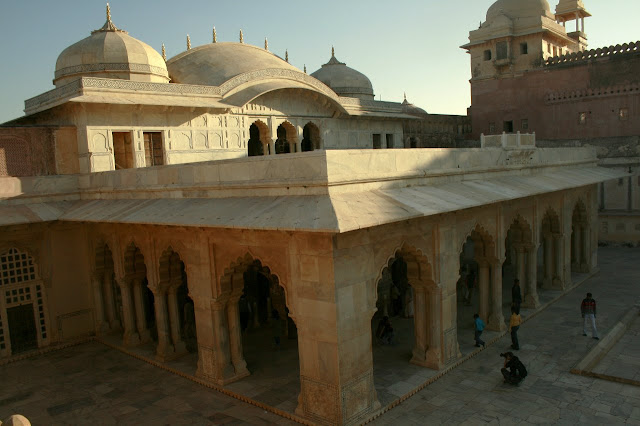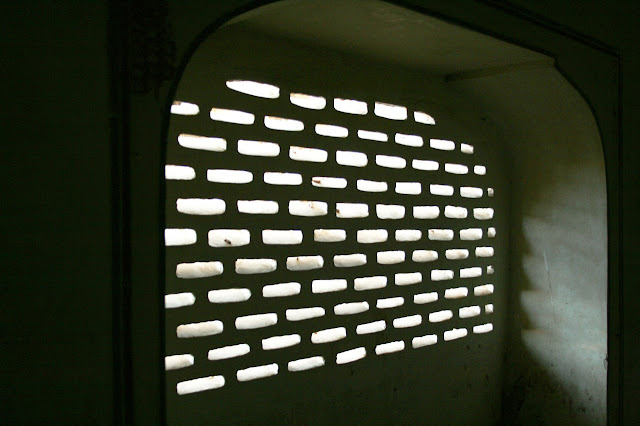AMER PALACE: Raja Man Singh built Amer Palace in 16th Century. Rajputs made use fo Amber Fort from 16th Century up to the foundation of Jaipur in 1727 both for defense purpose as well as the residential purposes.
Within its mighty walls, you will find magnificent places made from marble & precious stones, richly decorated with intricate stonemason works and paintings, which represented the royal splendor and luxury. The fort’s first courtyard is a wide expanse, dominated by two buldings- the pillared red sandstone Diwan-e-Aam(The Hall for Public Audience) and the intricately painted double-storeyed Gate. Beyond these lies a series of pillared corridors, centering around a typical Mughal Garden(Charbagh), bounded on one side by Sukh Niwas and on the other by Jas Mandir, a lovely piece of architecture: delicate mirror work, paint & carving (especially the exquisitely carved jaalis). There is one temple inside the fort & we didn’t saw it from inside due a long queue of tourists.
Within its mighty walls, you will find magnificent places made from marble & precious stones, richly decorated with intricate stonemason works and paintings, which represented the royal splendor and luxury. The fort’s first courtyard is a wide expanse, dominated by two buldings- the pillared red sandstone Diwan-e-Aam(The Hall for Public Audience) and the intricately painted double-storeyed Gate. Beyond these lies a series of pillared corridors, centering around a typical Mughal Garden(Charbagh), bounded on one side by Sukh Niwas and on the other by Jas Mandir, a lovely piece of architecture: delicate mirror work, paint & carving (especially the exquisitely carved jaalis). There is one temple inside the fort & we didn’t saw it from inside due a long queue of tourists.

 Artistic work around door @ Amer Palace
Artistic work around door @ Amer Palace Evening @ Amer Palace
Evening @ Amer PalaceKali Temple, which is also known as Shila Devi Temple, forms the part of the Fort. It is renowned for its glorious past, huge silver lions and silver doors. Picture above shows entrance for the temple...
 Situated at Jaipur, the reflection of Amber Fort in the lake below looks almost divine.
Situated at Jaipur, the reflection of Amber Fort in the lake below looks almost divine.Jaipur is beautiful city & you need time if really interested to explore the monuments, museum & the city.
More Know









.jpg)
Comments
Great pictures.
Sudha - I hope that you visit Jaipur again and share your experiences about differences you notice after 30 years.